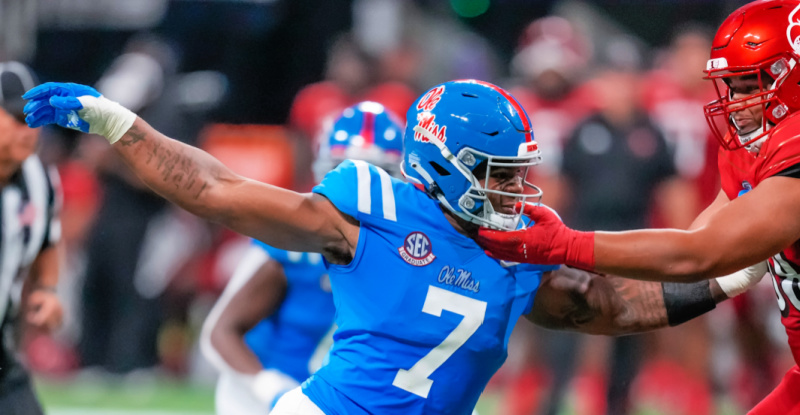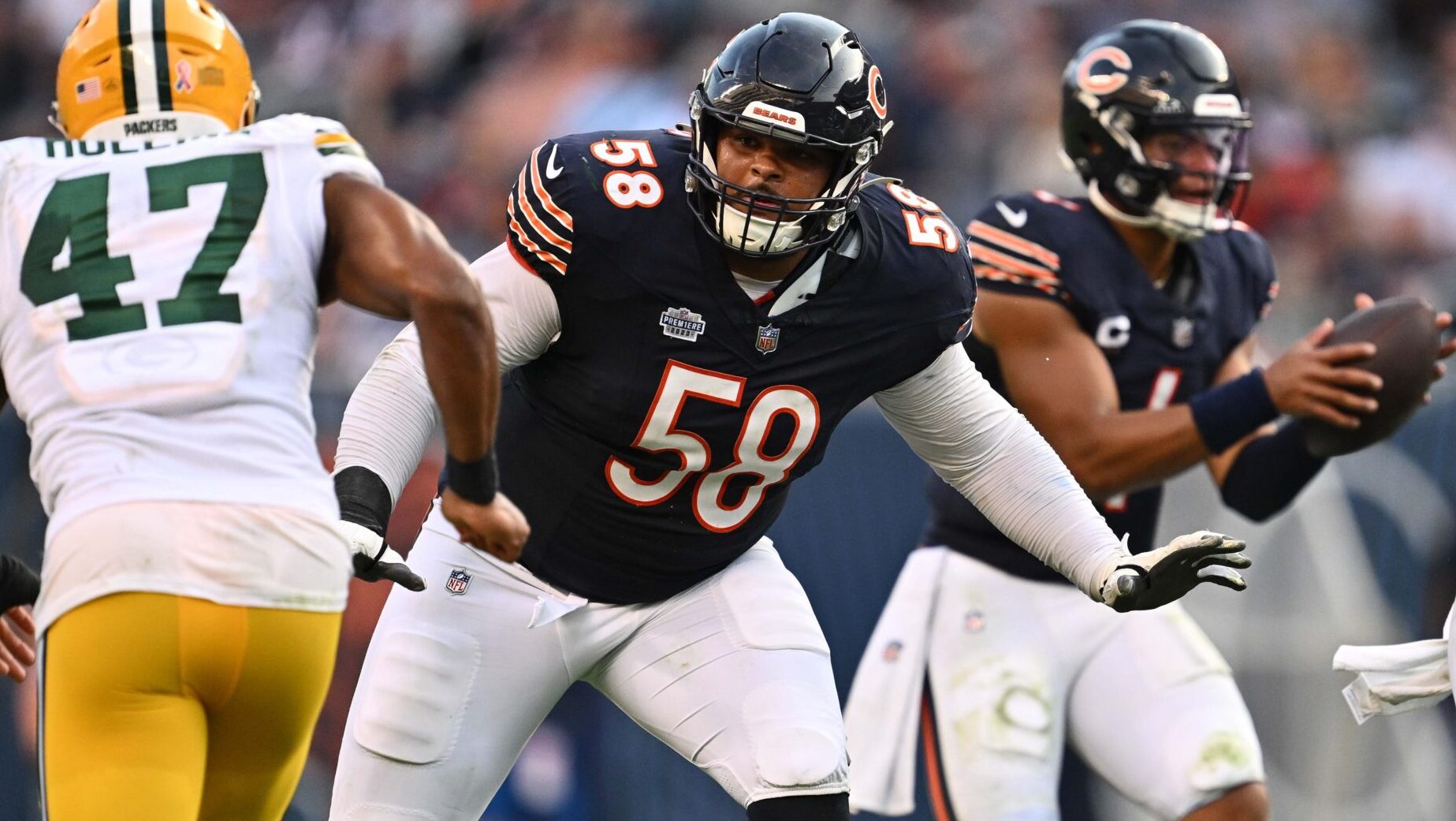Analysis
5/10/22
6 min read
Rushers vs. Chasers: Sports Scientist Breaks Down NFL's Top Rookie Pass Rushers

The 2022 NFL Draft was all about pass rushers, as the top two picks were edge rushers and 10 of them went in the first two rounds. The 33rd Team recently had world-class exercise scientist Paul Francis share his thoughts on many of the top pass rushers in this year’s draft on our Wednesday Huddle, detailing how a few key metrics often translate to on-field success, which top pass rushers we can expect to make an impact right away, and which later-round picks could find NFL success.
“When we are talking about pass rush, we are talking about specific things about the pass rush. Edge rushers have to do a thousand different things on the field, but we really get excited about their ability to get a sack under three seconds,” said Francis.
“Most sacks happen over four seconds [of coverage time], which is way after the average time to release the ball [2.8 seconds]. Sacks in under three seconds are referred to as ‘rush sacks,’ which are the rarest. But there's just something about getting to the quarterback before they can move."
Francis separates pass rushers into two groups: rushers and chasers.
“For the chasers, I don’t talk about the actual [40-yard dash] time,” he details. “I think it’s more useful for coaches to talk about yards per second. It has more utility for the coach to know how to use these players.”
Below are the top edge rushers in terms of yards per second (y/s) in the 2022 NFL Draft:
| Team | Draft Position | Y/S | |
| Amaré Barno | Panthers | 6 (189) | 9.16 |
| Sam Williams | Cowboys | 2 (56) | 8.85 |
| Travon Walker | Jaguars | 1 (1) | 8.76 |
| Kayvon Thibodeaux | Giants | 1 (5) | 8.64 |
Francis describes Barno as “A rocket — I’ve never seen anything like that before'' and adds that “With Sam Williams, I trust Dan Quinn to work some magic with him.”
He is excited about the prospect of the two top-five picks, stating that their yards per second numbers, along with their skill sets, will make them exciting to watch.
As opposed to the philosophy of chasers, who win with all out speed when the coverage is excellent, rushers in the NFL “are all about generating power at first contact.”
“In the six years I’ve been doing this, I’ve never seen an edge rusher break an offensive lineman in the NFL without at least 900 pounds [of force] involved. At between 900-1,200 pounds, you can break the offensive line, but you need to force an error, or they need to make one.
“Anyone that has 1,200 pounds or more is going to win 100% of the time — there's not a lineman that can stop someone at 1,200 pounds or more."
To examine who at the combine could be a future sub-three second sack specialist and generate rush sacks, he looks for “those that can generate 1,650 pounds of force or more at the 10-yard line and be traveling at six yards per second or more.”
The 2022 NFL Combine had four rushers that generated over 1,650 pounds of force as shown in the table below.
“When you add in the speed, Cameron Thomas and Travon Walker jumped off. The Jaguars did an excellent job selecting Walker. If the Cardinals coaches use Thomas as a sub-three specialist — if there's a third and long and he's on the field — he's going to be fun to watch. If the Cardinals use him in the right way, the Cardinals GM and front office will look like heroes."
| Team | Draft Position | Force (pounds) | |
| Thomas Booker | Texans | 5 (150) | 1,770 |
| Cameron Thomas | Cardinals | 3 (87) | 1,668 |
| Travon Walker | Jaguars | 1 (1) | 1,668 |
| Logan Hall | Buccaneers | 2 (33) | 1,659 |
“[Thomas] Booker has good speed, but he doesn’t have confidence at collision. He has good numbers, but that is something that probably won’t allow him to translate to the NFL unless that’s addressed.”
San Diego State product Thomas stands out as a value pick for him in the third round.
“Thomas' numbers are almost the same as Walker if we are looking at it through the lens of a sub-three specialist and the ability to get rush sacks. Edge rusher is the only proactive position on the field; everyone else has to react to something else.”
When asked by NFL Films’ Greg Cosell if there was any concern about all but one of Thomas’ 10.5 sacks in 2021 being coverage sacks, as opposed to beating an offensive lineman, Francis explained one of the key differences between the NFL and college football.
“The numbers put up for the NFL are all over the place in college. They don't have to apply the same way. You can break an offensive lineman in college at just 600 pounds. This is the danger of getting excited about a player for his stats in college, as opposed to what he's actually capable of."
Francis beamed when talking about two players he’s never seen the likes of before — “talented athletes with the size, speed, and ability to generate power with their first three steps.” First-round defensive tackles Jordan Davis and Devonte Wyatt went 13th to the Eagles and 28th to the Packers, respectively. Davis generated 2,029 pounds of force at 10 yards while moving at 5.95 yards per second — an astounding physical performance that Francis revealed he hadn’t seen anyone do in six years of NFL Combine data. He also noted that Wyatt’s performance of 1,831 pounds generated and clocking in at 6.02 y/s was another special performance.
"If the Eagles and Packers were to get crazy and break with convention and put these guys on the edge on third and long, I think some really cool stuff could happen,” postulates Francis. “These are two of the more exciting ones for me. If we're looking at the ability to destroy an offensive line because you can generate power, these two guys really jump off the page."
Looking forward, Francis suggests that teams should, “Be looking at the schedule and the opposing quarterback release times and tendencies” to predict how rushers will perform this year.
“As the season goes on, we're going to get data on which line breaks under which condition. In the backend of 2021, T.J. Watt's schedule was favorable compared to Myles Garrett's because the lines he was facing were letting people through at 1,100 pounds, while Myles' [opponents] were higher.”
This was clearly evident as Watt had 10 sacks in his last six games, while Garrett had just three in the same time span.
A more player-centric focus hones in on the capacity of pass rushers, which he describes as, “How many times they can produce results and what their speed of recovery is.” Training camps will be crucial to their development and provide the first glimpse into their NFL impact. As Francis put it, “We are spoiled this year with this class of edge rushers.” This year’s crop of rookies should strike fear in the hearts of quarterbacks everywhere.








